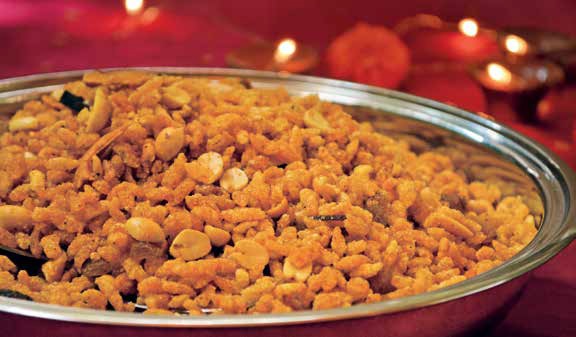More Than Just Firecrackers, Feasts and Fun
According to the Hindu calendar, the holy period of four months (Chaturmas) begins with Ashadhi Ekadashi (fourth month) and ends with Kartiki Ekadashi (eighth month). After a series of fasts, penances and other rituals, the the time has come for Diwali to makes its illuminated presence. This festival of lights falls in the months of Ashwin and Kartik and is one of the most popular occasions of the year popular occasions of the year. The celebratory atmosphere is helped by the retreat of the monsoon, that have left the earth lush green, and the markets full of fresh produce. There is also the onset of a winter chill that adds joy to the overall atmosphere of gaiety and happiness all around.
Diwali sets in with Vasubaras (12th day of the lunar fortnight in the month of Ashwin) when the cow, which is considered sacred, is worshipped along with the calf. Dhanteras or Dhanatrayodashi (13th day) is considered auspicious for the arrival of wealth and it is on this day that gold, silver, money and trading books are worshipped. An offering of coriander seeds and jaggery is made to mark this ritual. The following four days comprise the main Diwali, featuring a variety of colourful akash kandils (lanterns) hanging outside every house; family get-togethers, distribution of special sweets; purchase of new clothes; and the sharing of gifts and love. Narakchaturdashi is the first day when the entire family gets up early before dawn, has an oil and hot water bath along with a scented herbal mixture called Utne (Abhyangsnana).
The women of the house light the oil lamps, known in local parlance as ‘pantyas’. This is also the day that marks the beginning of Diwali’s sound and light show with the firecrackers lighting up the skies in a spectrum of colours while the young ones shatter the airwith a variety of firecracker-bombs. All this continues till the last day of the festival. The next day i.e. Amavasya (no moon day) is auspicious for worshipping Lakshmi, the goddess of wealth. The ceremony is called Lakshmipoojan during which gold, silver and money are worshipped in homes.
For the business community, this is the day when the new books of accounts are anointed though no financial transactions are carried out till the next day when the new lunar cycle begins. It is the first day of the Kartik month and is called Balipratipada or Diwali Padwa. It is also a day considered auspicious to buy gold. In the olden days, women would wait for this particular day to receive gifts of gold and it was thus called ‘Stree Dhan’. Now of course it is not the occasion but the volatile price of gold that influences the purchase. The following day is Bhaubij, a day to foster strong bonds between brothers and sisters. The former shower their love and blessings with gifts and a vow to protect and stand by their sisters at all times. Though for most people this is the last day of Diwali, the festival actually ends with Tulshivivah (marriage of the sacred plant Tulshi).
In recent times though, the focus of celebrating Diwali has shifted to socializing and family bonding with lesser emphasis on observing the rituals. During the earlier days, however, Diwali being the biggest festival of all, preparations would begin much in advance considering that not everything was bought off a shop shelf. And one among such preparations was that of the pharal without which no Diwali can be complete.
Mythological Significance
Along with the agrarian importance of the Diwali festival that celebrates the kharif harvest and marks the conquest of good over evil, there is an interesting mythological story associated with every occasion over its five-day period.
Narakchaturdashi: It is believed that this day marks the celebration of Lord Krishna (eighth incarnation of Lord Vishnu) killing a demon named Narakasur, thus relieving the world of his tortures and bringing back peace and sanctity.
Lakshmipoojan: Demon king Bali had used his powers to keep Lakshmi (goddess of wealth) along with others in his captivity. Lord Vishnu in the form of Vaman rescued Lakshmi from Bali. From that day on Lakshmi is worshipped on this day, believed to be residing in the form of wealth and prosperity in every household.
Balipratipada: On pleading for forgiveness, Vaman bestowed one boon on the demon king Bali before sending him to paataal (neither heaven nor hell), which was that he would be remembered and worshipped by all on this day of the month of Kartik.
Tulshivivah: A marital knot is tied between Tulshi (sacred and medicinal plant; also considered a symbol of Lakshmi and adored by Lord Vishnu) and Lord Krishna on this day. This holy tie marks the beginning of the auspicious marriage season.
Author: Radhika Ghate
Photographs © Sachin Naik, Prutha Kulkarni
Source: MAHARASHTRA UNLIMITED | October-December 2013, Vol. 2





 +91 942 358 5984
+91 942 358 5984